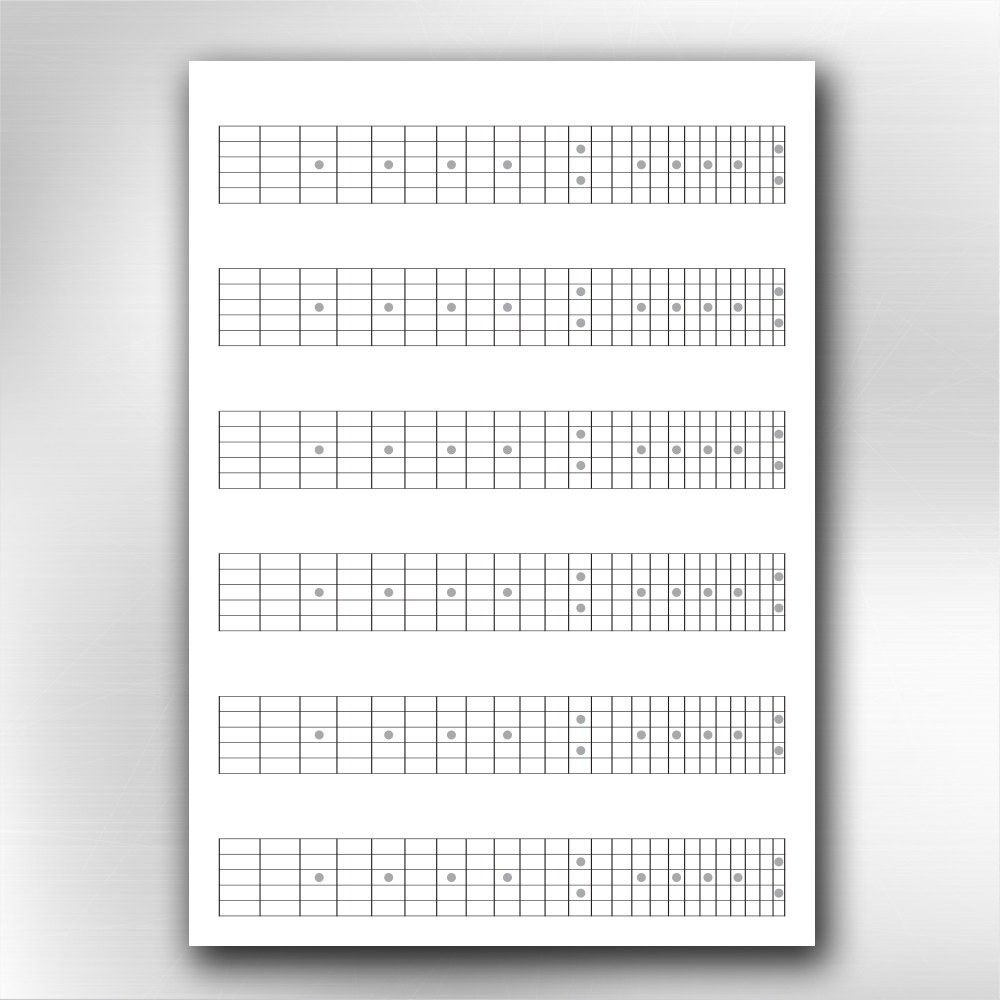
When adding a Fretboard Diagram to a score, a chord symbol is also automatically created. Chord Symbols linked to Fretboard Diagrams

This palette is also an example of the diverse diagram formats in use, as discussed above. Arrangers must consider many other voicings, positions, and chord qualities. Note: This range of chord diagrams, or indeed any selection of 21 chords, would not typically be sufficient for publication purposes. The name of each diagram appears when the cursor hovers over the entry. The Fretboard Diagrams palette in the Advanced Workspace provides 21 diagrams, comprising a single major, minor, and seventh chord for each diatonic scale tone (CDEFGAB). Overview of the standard guitar chord palette

#BLANK GUITAR NECK DIAGRAMS FREE#
Users are free to choose their preferences. For this reason, the MuseScore Fretboard Diagram interface supports diagrams of various types. Many inconsistent practices persist today, and distinct styles of chord notation are preferred in different musical genres and regions. Usage has varied widely from year to year, from publisher to publisher, from teacher to teacher, and from arranger to arranger. Note: Many aspects of music notation follow well-established engraving standards.
#BLANK GUITAR NECK DIAGRAMS HOW TO#
See How to use Fretboard Diagrams for custom/complex chords for examples. More advanced guitarists often prefer to start from a blank chord grid, and then draw the specific chord tones desired. There are literally thousands of guitar chords in general use, making a comprehensive palette or dictionary impractical. to be applied to the 21 standard diagrams. This technique enables chord extensions, alterations, different voicings, different positions, etc. In many cases, the standard chords from the Fretboard Diagrams palette are used as a starting point for creating modified chord diagrams, via the Inspector.

These 21 chords are adequate for many simple pop or folk music scores.

These consist of a single example of a major, minor, and seventh chord for each diatonic scale tone (CDEFGAB). A set of 21 common chord diagrams for the guitar are found in the Fretboard Diagrams palette in the Advanced Workspace. The Fretboard Diagram mechanism can be used in several different ways. (Note: Fretboard Diagrams are an alternative to and quite different from Tablature, which is a specialized notation form that is preferred by some string instrument players.) They are commonly used for guitar chords, but MuseScore permits the creation of diagrams for any instrument.īelow is a simple example of Fretboard Diagrams use. They usually appear above the staff on lead sheets and piano scores. MuseScore allows the use and creation of fretboard (or chord) diagrams. Users of versions prior to 3.1 should go to Fretboard diagrams (prior to version 3.1). Note: This page applies to MuseScore 3.1 and above only.


 0 kommentar(er)
0 kommentar(er)
